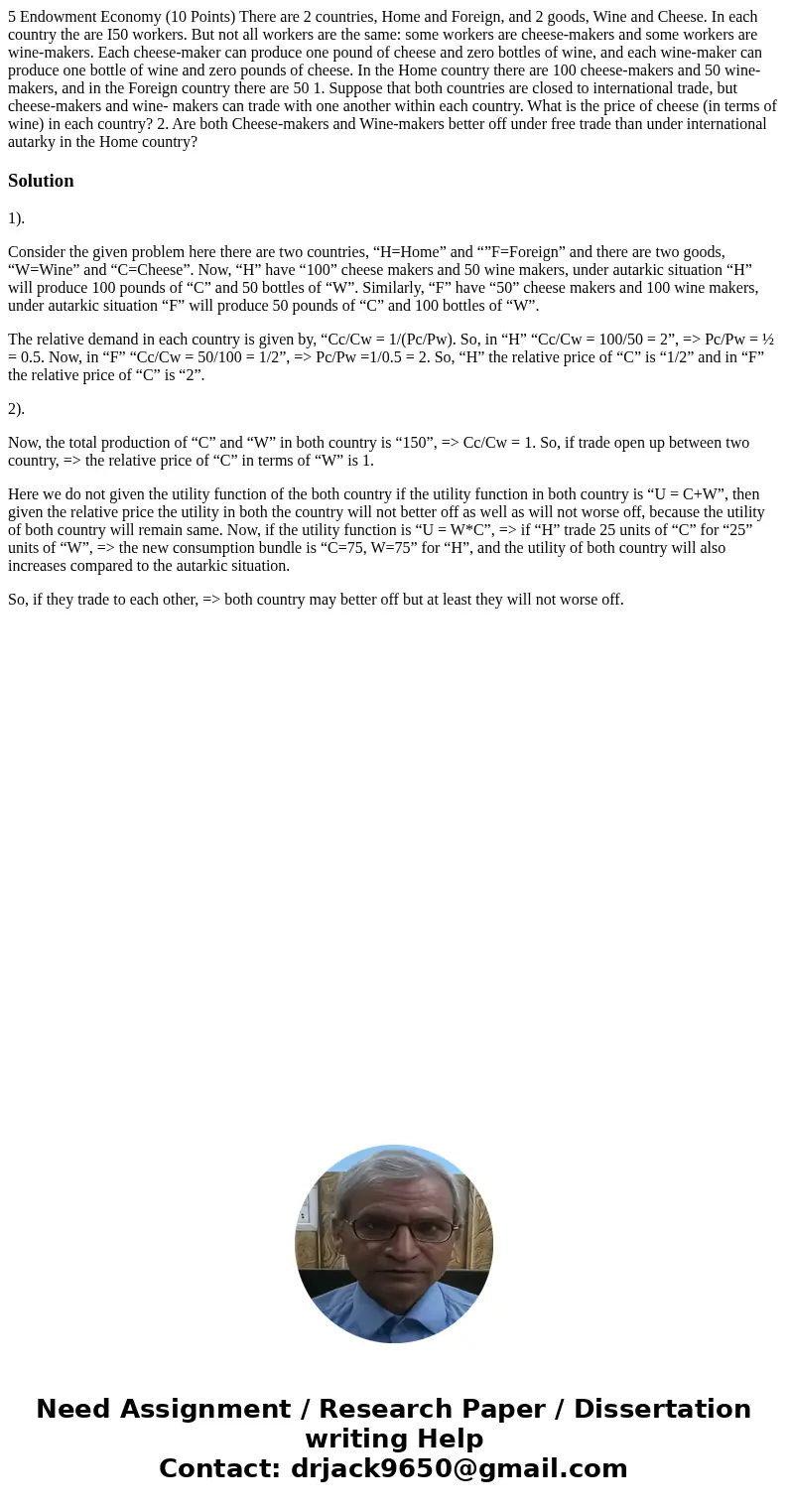5 Endowment Economy 10 Points There are 2 countries Home and
Solution
1).
Consider the given problem here there are two countries, “H=Home” and “”F=Foreign” and there are two goods, “W=Wine” and “C=Cheese”. Now, “H” have “100” cheese makers and 50 wine makers, under autarkic situation “H” will produce 100 pounds of “C” and 50 bottles of “W”. Similarly, “F” have “50” cheese makers and 100 wine makers, under autarkic situation “F” will produce 50 pounds of “C” and 100 bottles of “W”.
The relative demand in each country is given by, “Cc/Cw = 1/(Pc/Pw). So, in “H” “Cc/Cw = 100/50 = 2”, => Pc/Pw = ½ = 0.5. Now, in “F” “Cc/Cw = 50/100 = 1/2”, => Pc/Pw =1/0.5 = 2. So, “H” the relative price of “C” is “1/2” and in “F” the relative price of “C” is “2”.
2).
Now, the total production of “C” and “W” in both country is “150”, => Cc/Cw = 1. So, if trade open up between two country, => the relative price of “C” in terms of “W” is 1.
Here we do not given the utility function of the both country if the utility function in both country is “U = C+W”, then given the relative price the utility in both the country will not better off as well as will not worse off, because the utility of both country will remain same. Now, if the utility function is “U = W*C”, => if “H” trade 25 units of “C” for “25” units of “W”, => the new consumption bundle is “C=75, W=75” for “H”, and the utility of both country will also increases compared to the autarkic situation.
So, if they trade to each other, => both country may better off but at least they will not worse off.

 Homework Sourse
Homework Sourse